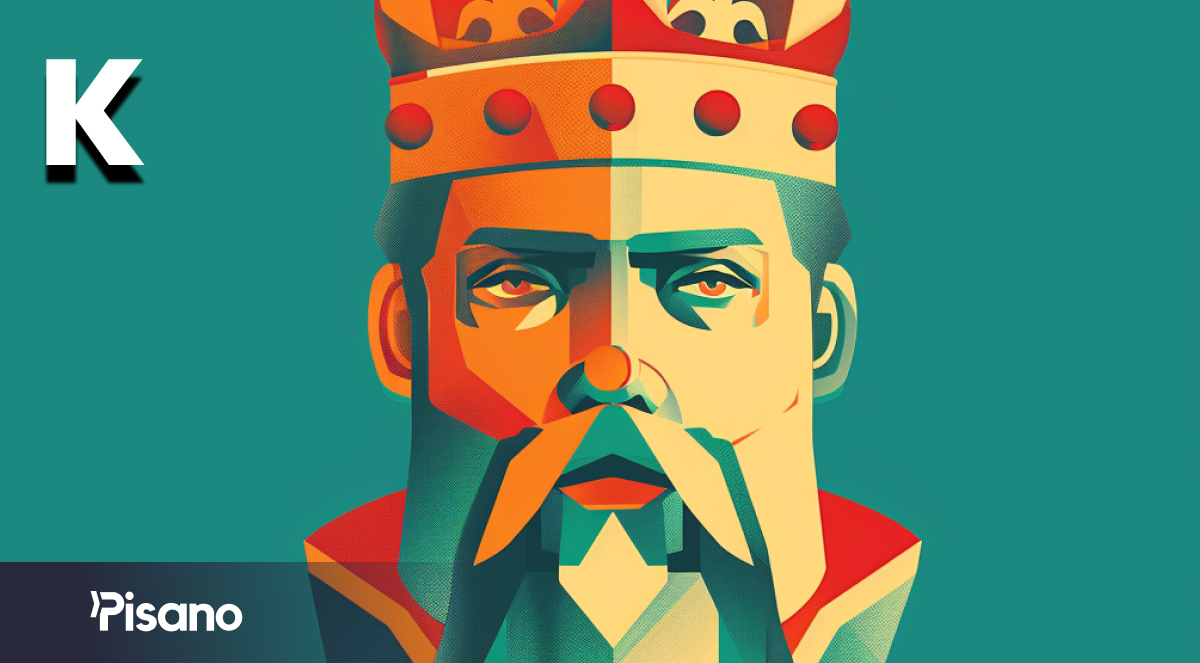We, as customer experience (CX) professionals, spend our days crafting exceptional experiences for others.
But the tables turn sometimes, right? Have you ever been disappointed when a brand seemed indifferent to your needs?
In this article, I'll delve into the fundamentals of customer-centricity, the four key aspects of the customer's nature that I call "The KEOM Nature" (King, Employer, Oxygen, Marketer).
By understanding these aspects, organizations can empower their employees to engage with customers meaningfully, ultimately leading to a better CX and increased business growth.
1. The Customer is the Supreme King of Your Business
I've noticed that many organizations struggle to deliver an exceptional customer experience. Often, this stems from a lack of understanding about the true nature of the customer and their impact on business success.
The same way we behave in front of a Supreme King, the same way we need to behave in front of the Customer. The way we talk to a Supreme King, the way we respond to them should be the same way when conversing with the customer. 
It's crucial to prioritize the customer experience, treating each interaction as an opportunity to enhance satisfaction and loyalty. I like the title Shep Hyken chose for one of his books, "The Cult of the Customer", I will go deeper and say we need to "venerate" the customer.
When a customer complains to you about a bad experience, if you start defending your position instead of apologizing to the customer and promising them to turn this bad experience into a good one, you have already failed it. You never quarrel with your customer no matter what they say to you and how they say it.
Addressing customer complaints with empathy and a proactive approach to resolution is paramount in fostering positive experiences and maintaining trust. Maintaining professionalism and respect in all customer interactions is fundamental to nurturing lasting relationships and fostering a positive reputation.
"The customer is not always right, but he is the customer" - Shep Hyken.
This quote encapsulates the essence of customer-centricity, acknowledging that while customers may not always be correct in their assessments, their perspective and satisfaction remain integral to the success of any business endeavor.
2. The Customer is the Undisputed Employer
Many employees think it is their organization that pays them, this way of thinking is totally wrong. The one who pays your salary is the customer.
-1.jpg?width=786&height=434&name=Adapt%20(1)-1.jpg)
No Customer = No Business = No Organization = No Career = No Money
Throughout my professional journey, I've observed a trend where employees exhibit greater deference and professionalism toward their managers and managing directors (MDs) than they do toward their customers. However, I firmly believe this dynamic should be reversed.
Employees should certainly demonstrate respect and professionalism towards their managers and MDs, but their focus and efforts should be primarily directed toward enhancing the customer experience.
After all, satisfied customers are the lifeblood of any successful business, and prioritizing their needs ultimately benefits everyone involved.
3. The Customer is the Oxygen of Your Business
Science teaches us that our Atmosphere is made of mostly O2 (Oxygen) which our bodies have evolved to breathe. Oxygen is very important because most living things need it to survive. It is the key for generating energy in cellular operation.
.jpg?width=1200&height=663&name=Adapt%20(2).jpg)
In this same idea, you need to know and believe that the customer is the only key for your business to survive. Your business depends totally on the customer, I was even on the verge of saying, your life depends totally on the customer (but well, let us keep it to business). So, you need to know how to behave towards such an important person.
Just as oxygen fuels our bodies, exceptional customer experience fuels business growth. By prioritizing customer needs and delivering seamless interactions, businesses can cultivate a loyal customer base and drive revenue generation.
By focusing on key aspects of customer experience, such as personalized interactions, efficient service, and proactive communication, businesses can create a positive and memorable customer journey. This, in turn, fosters customer satisfaction, loyalty, and advocacy, ultimately leading to increased profitability and business success.
4. The Customer is the Best Chief Marketing Officer (CMO)
NPS (Net Promoter Score) is one of the key customer experience metrics in many organizations, and this metric is totally driven only by the customer.
In essence, NPS captures how likely those customers are to recommend your business to others, a powerful indicator of whether your products and services are truly resonating in the market.
.jpg?width=1200&height=663&name=Adapt%20(3).jpg)
It's the customers who tell you if your products and services match the market you are operating in, it's them who control your ads on all the channels you choose to do it, and it's them who bring growth to your business by adding other customers.
I always believe that the customer is the best ads agent you have in order to increase footfall in your business, though I recognize that the other marketing plans are important as well.
What I mean is that when you treat customers as the Supreme Kings they are, as the undisputed employers they are and as the oxygen they are, they will bring you more other customers than your Ads you will do.
This one customer will talk to his relatives about how they are treated by your organization and will even ask them to come and do business with you, and guess what? They will come.
In my professional career I have discovered that when a customer is satisfied, happy and pleased with an organization, they can talk about that organization to their relatives better than the employees of the organization can do.
Many organizations continue to record high rates of customer churn just because their employees have no understanding or very little understanding of the nature of the customer.
Consider Each Customer as the Only Customer You Have
I was discussing with one of my colleagues on the behavior of customers, he told me that one of our customers abused his rights because he was told to move out of the office as there was a space constraint, but the customer refused by saying that he can sit wherever he wants, and nobody has the right to tell him where to sit. My response was:
"Customers can abuse only when they become physically violent, anything they say or do other than being physically violent is not at all an abuse."
Many employees think in their heads:
“If I treat badly this one customer and he leaves, this will not change anything for the business.”
Very wrong way of thinking, employees should consider each customer as the only customer they have for their business; and given that they are the only customer the organization has, treating them not the way it should, will have a serious negative impact on the business.
Conclusion
With this article, I wanted to raise awareness among leaders to emphasize their organization on the nature of the customer if they want to see growth in numbers.
By prioritizing an understanding of your customer's nature – their needs, wants, and pain points – you can unlock significant growth for your brand.
This customer focus should permeate your entire organization, informing everything from product development and marketing strategies to customer service interactions.
By fostering a culture of customer centricity, you'll be well-positioned to not only attract new customers but also cultivate enduring loyalty among your existing ones.
Always remember, the customer has the KEOM nature!




